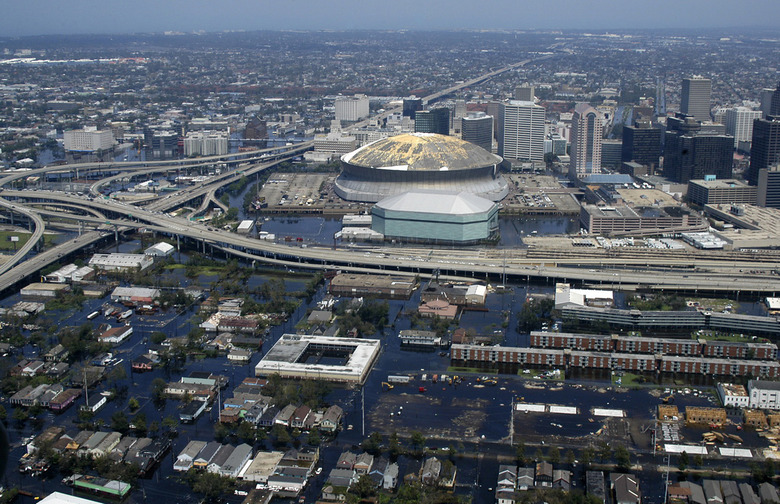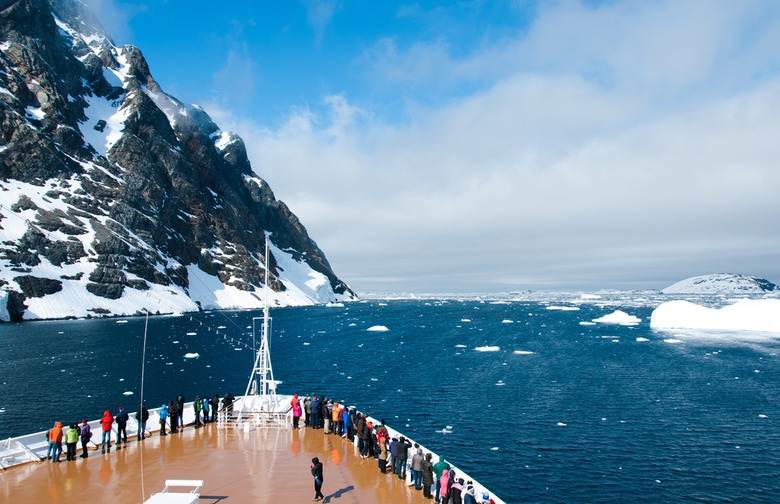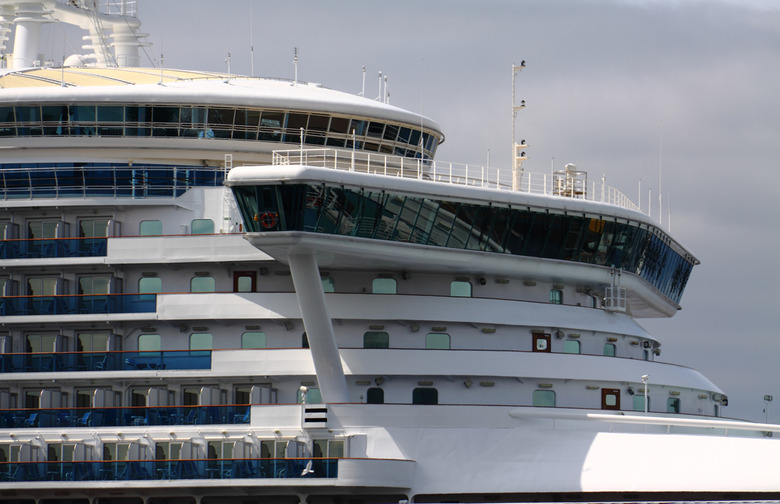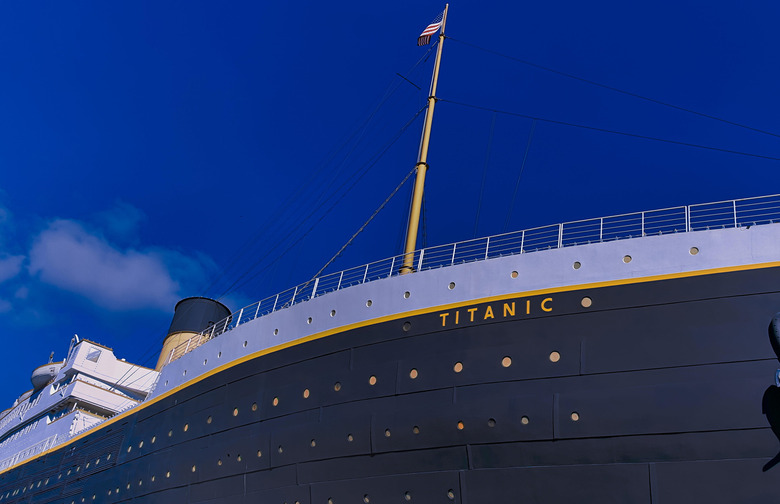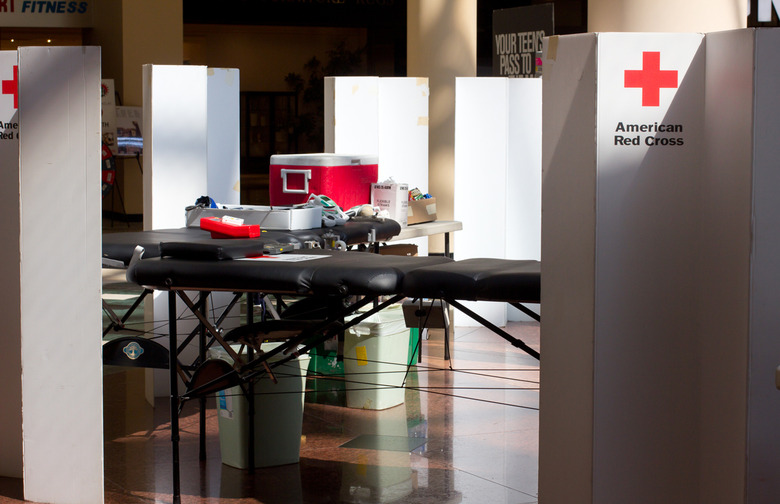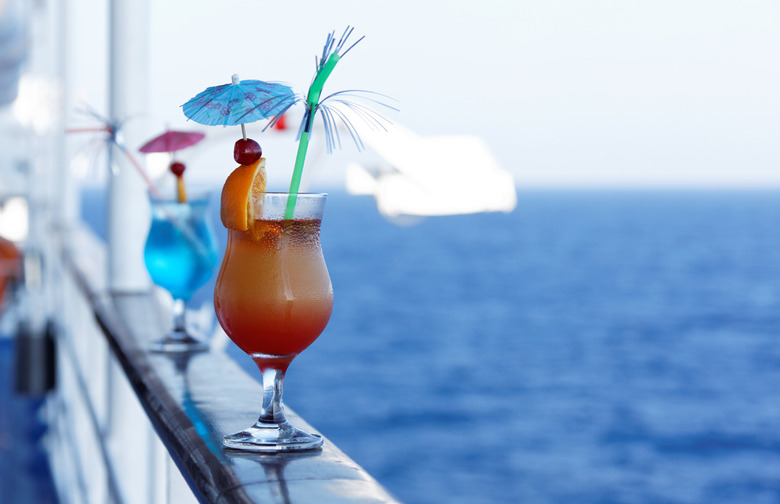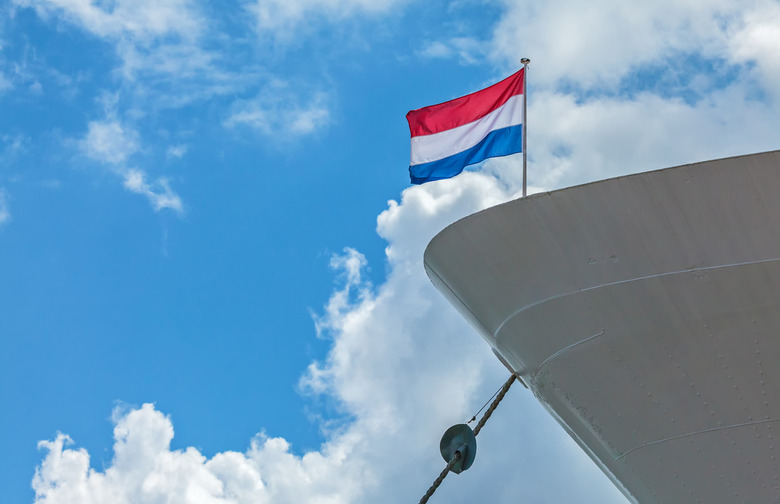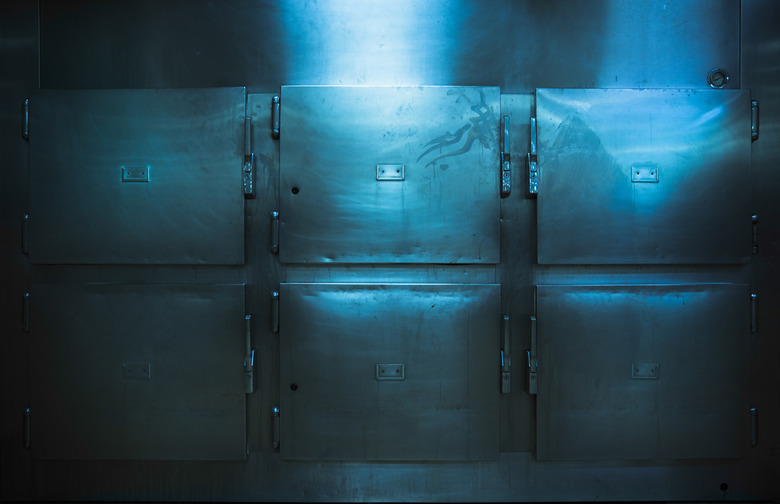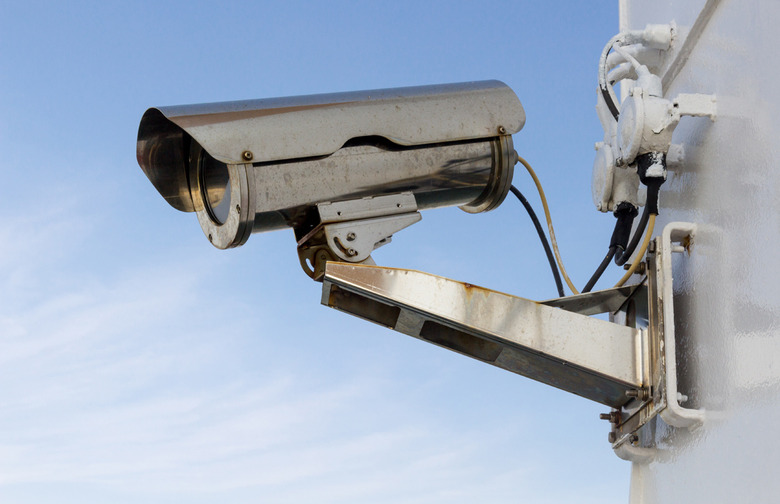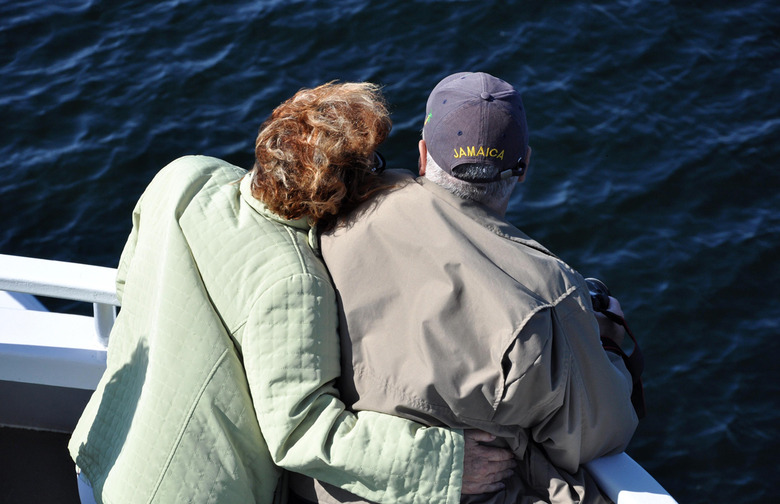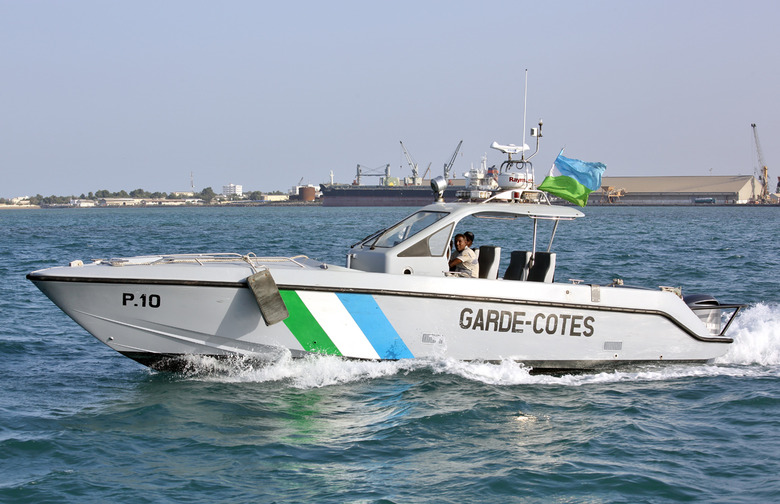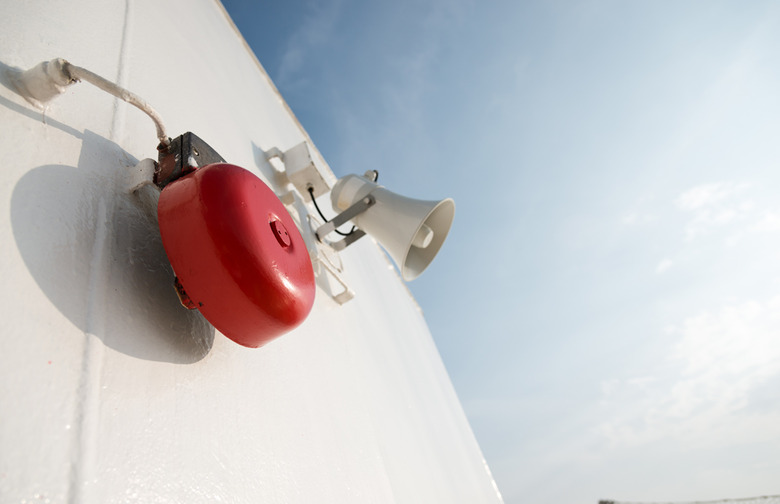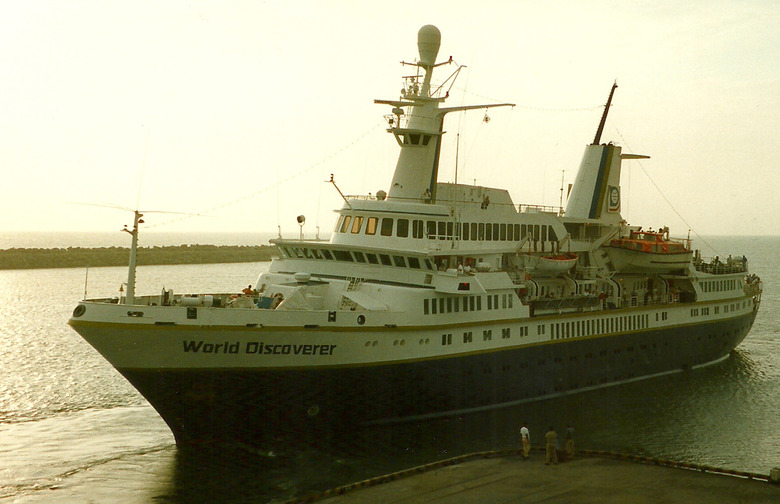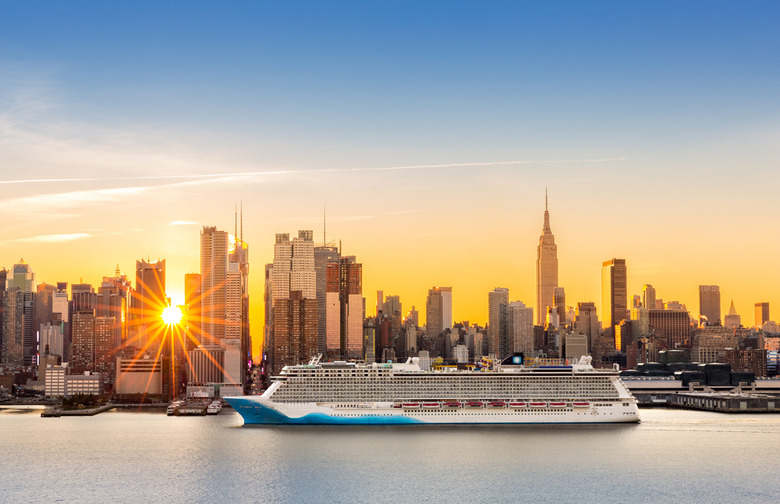20 Crazy Facts About Cruise Ships
After Hurricane Katrina ravaged the Gulf Coast back in 2005, Tulane University was one of 30 colleges in the area looking for answers on how to proceed in its wake. One of the issues was where to house students after several dorms were destroyed, and the university came up with a unique solution: Bring in a cruise ship. Tulane imported Mediterranean's 800-foot MV Dream ship all the way from Europe to the Mississippi River, where at least 150 students made it their temporary home for five months until things settled down back on campus.
A Ghost Ship Lurks Somewhere Out There
The MV Lyubov Orlova was built in Yugoslavia in 1976, and was used as an Antarctic cruise ship for over 30 years before being taken out of commission in 2010. However, after being sold for parts in 2012, the ship broke free from its tow line and began drifting free near Newfoundland's Avalon Peninsula. On February 1, 2013, Transport Canada successfully gained control of the vessel for safety reasons, but upon hitting international waters, decided to cut it free, stating that the ship no longer posed a threat to the country, and was the responsibility of the ship's owner. A month later, Lyubov Orlova was spotted 1,300 nautical miles from Ireland's coast, and overseas media outlets began reporting that it would soon run aground in the country, and also that it was filled with hordes of cannibalistic rats. This turned out to be false, and aside from a few stray (and very eerie) distress signals, the Lyubov Orlova was never seen or heard from again.
A Lot of People Disappear on Cruises
Every once in a while, a news story appears about someone who became lost at sea while aboard a cruise — either by tumbling overboard, or under more mysterious circumstances. In fact, the total number of these incidents is actually quite startling. From 2000-2013, about 200 passengers vanished without a trace while cruising. If it's any consolation to those worried about accidents onboard, this number obviously includes some suicides, and not all those who fall overboard are lost forever; at least 10 people have been successfully plucked from the water during that same timespan — including one who was rescued after an unimaginable 18 hours.
A Titanic Replica Is in the Works
As questionable of an idea as it may initially seem, the concept of building a functioning replica of the Titanic has been discussed often since the release of the blockbuster film Titanic in 1997. Although numerous people and companies have attempted to get the ball rolling only to have their plans fizzle out, the idea, unlike the actual Titanic, has proven to be unsinkable. In 2012, Australian billionaire Clive Palmer announced he would lead the next charge, and despite some ups and downs, a spokesman for Palmer announced in September 2015 that the ship would be launched in 2018, to much fanfare. Time will tell if the dream manages to stay afloat.
Curious about the luxurious means served on the Titanic? Click here to find out more.
B.Y.O.B. (Bring Your Own Blood)
"Bring your own blood" might sound like the name of a death metal group (dibs!), but it's actually the unwritten policy of most cruise lines. Instead of stockpiling and storing blood onboard in the unlikely event that someone needs a transfusion (like this instance aboard a Carnival ship), the ship's doctors and nurses will instead turn to the few thousand passengers onboard to donate. This, as much as anything else, proves that cruise ships really are floating cities.
Celebrity Chefs Are All Over Cruises
Think cruise ships are all about crowded buffets and stale, uninspired dishes? You couldn't be more wrong. Not only do cruise meals (yes, even of the all-you-can-eat variety) rival some of the best fine dining restaurants on land, but an increasing number of celebrity chefs (and those revered in the culinary community) are making their way into the cruise industry to run the enormous dining rooms or even open their own signature restaurants. Notable names include Geoffrey Zakarian, Guy Fieri, Jacques Pépin, Nobuyuki "Nobu" Matsuhisa, Thomas Keller, Jamie Oliver, and Curtis Stone.
To see the best celebrity chef restaurants on cruise ships, click here.
Colossal Carbon Footprints
For a trip that revolves around fresh air and miles of endless pristine ocean, cruises do an awful lot of environmental damage. For example, the Queen Mary 2 uses so much fuel that its miles-per-gallon average is about 41 feet, requiring about 4,381 metric tons of fuel per voyage. The Sapphire Princess generates the same amount of sulfur dioxide as 13.1 million cars every day. Additionally, according to the Environmental Protection Agency, a cruise ship carrying 6,000 passengers generates about 210,000 gallons (800,000 liters) of raw sewage per week — most of which is dumped directly in the ocean, as long as they are at least three miles from shore. And that doesn't even include the oil-rich bilge water dumped on a regular basis as well.
Get Ship-Wrecked!
Although people lament having to spend money on overpriced drinks aboard the major cruise lines (the ones that aren't all-inclusive, at least), this isn't true for all cruises. Numerous ships (such as Viking Lines) run between Stockholm and Helsinki, where almost all the passengers are there for the sole purpose of drinking cheap, tax-free booze. Since guests pay less than they would onshore for beverages and food, and can book four people to a standard cabin for much less than the price of a hotel room on land, these trips make for the perfect overnight getaway for partiers. It's even cheaper than a flight, in most cases, and it sure beats the hassles of air travel!
Click here to find out about the 8 Best All-You-Can-Eat Cruise Ship Buffets.
Name That Flag
Although you're aware (we hope) of your ship's departure port and stops along the way, cruise ships are often registered in countries that might surprise you — like Panama or Liberia — even though they might not go anywhere near those locations. This is a bit shady, but since other countries might have environmental (pollution) or human rights (employee wage) regulations that are less strict than the ship or line's actual home country, companies can cut through red tape a lot easier using this method.
Did you know most people in Liberia speak English? These surprising nine other countries do too.
Onboard Morgues
With about 20 million cruise passengers traveling every year — half of whom are 50 years of age or older — there are bound to be some people who pass away during voyages, mostly from natural causes. Although bodies can generally be transported back to the family of the departed at the next port of call, this can get tricky on small islands or in third world countries, and thus almost all cruise lines have morgues onboard that are capable of storing one to three bodies each. Obviously companies don't release these figures, but reports from coroners' offices near ports suggest it occurs on a regular (but still relatively rare) basis. In that event, the cruise lines need to be prepared. Death doesn't take a vacation.
Passengers Are Tracked… Everywhere
Cruise ships are so large and full of so many people that cruises need to keep track of what's going on at all times. There are cameras almost everywhere for this purpose, including some that are equipped with head-counting technology. Cruise lines use this info to determine peak eating times for the various dining areas, as well as to gauge the popularity of activities and the general flow of passengers around the ship. Chances are, once you set foot outside your cabin door, you'll be on camera the rest of the day — so smile!
People Sometimes Retire to the Sea
As people get older, many eventually move into assisted living facilities, where linens are changed, meals are provided, activities are offered, and medical care is readily available. Sound familiar? It should, because all of these amenities are also offered on cruise ships, and sometimes the total cost can be cheaper. A 2014 study pegged the monthly rent of an assisted living facility at $3,500, and this number can obviously go much higher depending on the location. Budget-savvy cruisers know good deals can be found for a base price $100 per night on average, or $3,000 per month. A lot of people realized this (including an additional study), and instead of spending their money on living in an old folk's home, they opted for a room that includes gourmet meals, travels around the world, and quite a ride.
Pirates Are a Real Problem
For ships (both cruise and tanker) sailing along the coast of Africa near Somalia, pirates can post a legitimate threat. And these aren't swashbuckling buccaneers singing songs while they swig rum and swing from ropes, but ruthless thieves and murders armed with assault rifles. In 2009 alone, pirates committed 200 ship attacks and made off with €30 million (or $34 million) in ransom and stolen goods. We say "ransom" because the pirates often take the ships, their passengers, and their crew hostage while holding out for more money. To combat this, ships are often equipped with high-pressure water hoses and sonic cannons that can fire concentrated beams of sound capable of permanently affect human hearing from over 900 feet away.
Some Cruise Employees Work for Free
Getting a job on a cruise can be quite desirable, especially for residents of third world countries who don't have a lot of other options and will literally line up down the street at their local recruitment centers — and this isn't even the worst of it. Many crew members are recruited by agents who charge them large sums of money (sometimes as much as $1,500) just to get a job interview and eventual job confirmation. And even after getting hired, a lot of new employees are then faced with paying for their own airfare to departure ports and uniforms, which can cost up to $2,000 in total. This means that many new crew members begin their employment indebted to the cruise lines, and must work "for free" until the money is paid off.
The Crew Speaks in Code
If you've been on a few cruises, you've probably heard the occasional (and often way too loud) announcements made over the loudspeakers. Generally this is limited to the mandatory evacuation drills or special events and circumstances, but once in a while a voice will declare a "Code Alpha" or "Code Bravo" is in progress somewhere on the ship. These mean there is a medical emergency or fire (usually very minor, thankfully) on board, respectively. "Code Adam" also exists in the event of a missing child, and "Code Oscar" means man overboard. No need to worry in these situations, because if the issue were more serious, the passengers would also be informed.
The Food Supply Onboard Is Astounding
As you'd expect, the amount of food brought onboard and consumed for a cruise of any length is quite impressive — but seeing it represented in actual statistics is shocking. Here's a sample of some cruise ship food stats: On Holland America's Eurodam, 2,550 fresh eggs are eaten each day. On the Carnival Dream, 28,730 shrimp are consumed each week. On the MSC Fantasia, 2,000 recipes are used on a seven-day cruise. The weight of Crystal Symphony's 10-day food supply? 60 tons, all of which are delivered to the dock in just a few hours in between cruises on turnaround day. Speaking of weight, Seabourn's luxury cruises will serve 10 pounds of caviar on a seven-day trip. And these are just for shorter cruises. On the P&O Ventura's 14-day voyage, a total of 171,840 meals will be served. This might be the first time that reading about delicious food actually made me less hungry.
Explore more about cruise ship dining by reading about the 9 Best Cruise Ships for Food.
The Fourth Smoke Stack Was Often Non-Functional
If you look closely at old photos of cruise ships from the late 1800s or early 1900s, you might see smoke coming from only three of the four funnels up top. This is because ships generally only needed three stacks to adequately vent smoke, heat, and excess steam from the boiler rooms. However, the funnels became symbolic of speed, safety, and power, so engineers often added a fourth purely for aesthetic purposes. Ships like the RMS Titanic, RMS Olympic, and HMHS Britannic are all famous for their iconic four-funnel design, but each of them was built with only three functioning stacks.
The Solomon Islands Shipwreck
In April 2000, the MS World Discoverer struck a large uncharted rock or reef off the coast of the Solomon Islands in Oceania, and began to take on a lot of water. Luckily, a ferry was dispatched to the ship and rescued all the passengers. The captain then brought the ship (which was listing at 20 degrees) into nearby Roderick Bay and grounded it to avoid sinking. 16 years later, the ship is still in the exact same place. When companies showed up shortly after the wreck to attempt to salvage the ship, they found that locals from the Solomon Islands (which was going through a civil war at the time) had boarded and ransacked the vessel, taking food, supplies, and even the electronic equipment. The World Discoverer has since become a tourist attraction for passing ships (it is probably a bit off-putting to actually see) and it can still be viewed on Google Maps.
“Titanic” Doesn’t Begin to Describe How Big Today’s Ships Are
When the 2,224-passenger, 46,328-ton, 882-foot-long RMS Titanic debuted in 1912, it was a marvel of engineering the likes of which had never been seen before. Today, it's practically a dinghy. The largest ship in the world, Royal Caribbean's Allure of the Seas, clocks in at 225,282 tons, 1,187 feet long, and can carry a maximum of 6,296 passengers. (Interestingly, Royal Caribbean's Oasis of the Seas, which debuted a year earlier, weighs the same and has the same capacity, but is two inches shorter in length.) Of course, this will all be irrelevant next month, when Royal Caribbean debuts the Harmony of the Seas, which is just a bit larger in every aspect: 227,000 tons, 1,188 feet long, and an 8,185-passenger capacity.
Travel Agents Are Still Relevant
In the Internet age, many people wrongfully assume websites like Orbitz, Expedia, and Booking.com have driven travel agents out of business. Although this is true to some extent, there is still a market for this service, especially when it comes to cruise lines. Recent studies found that 90 percent of cruises are still booked through travel agents. This is due to the fact that ship trips can be customized in so many different ways that it's best to have an expert handle the details. They also offer so many potential discounts of which travelers are often unaware, and some are exclusively granted to travel agents. Plus, flights often need to be booked in conjunction with cruises, so it's easier to have everything taken care of by a single person.
